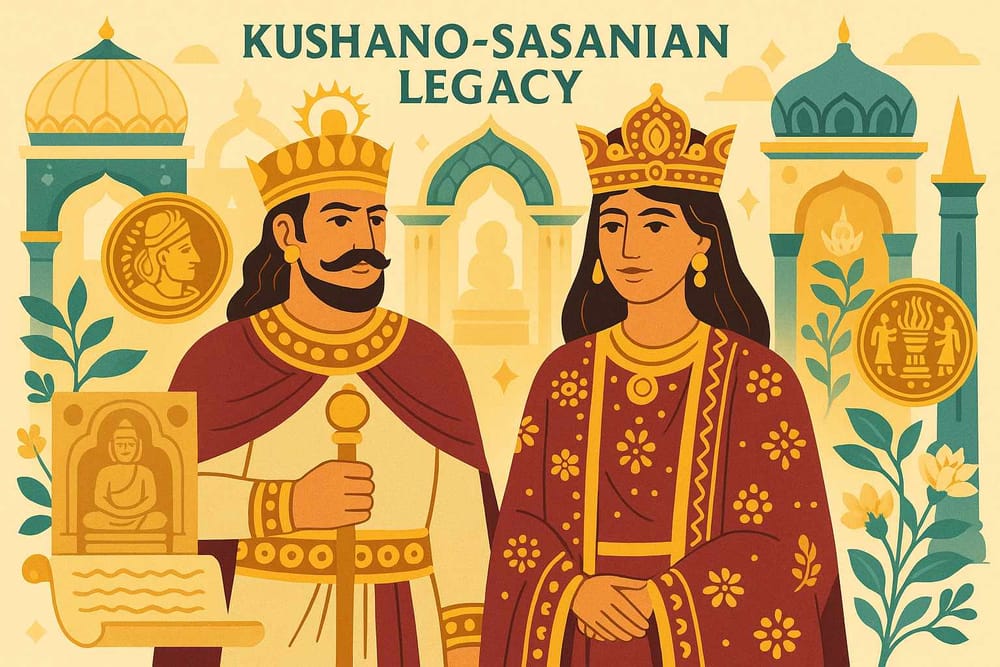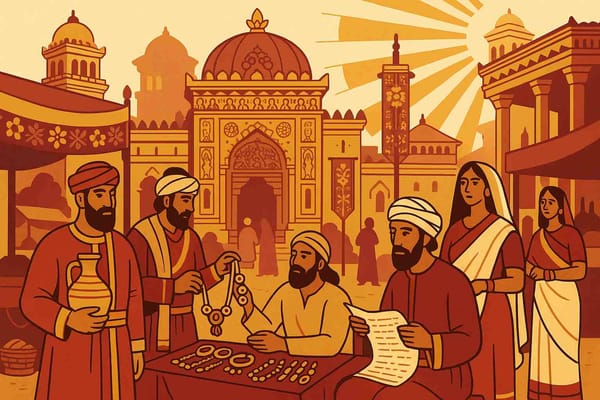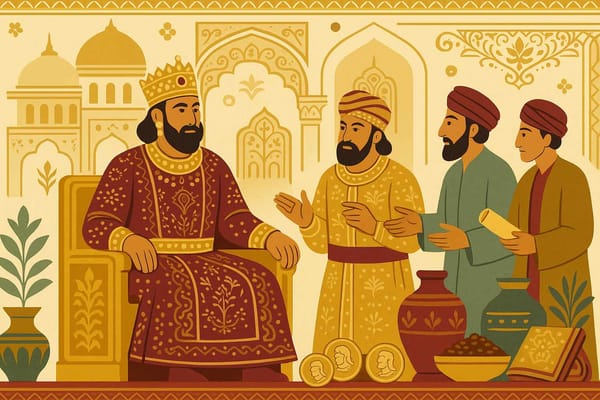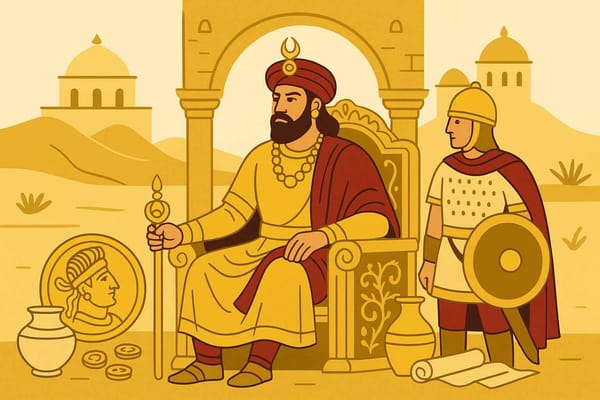
Exploring the Legacy of the Kushano-Sasanians: History and Impact
History isn't always about grand battles and massive empires that we read in school textbooks. Sometimes, the most beautiful chapters are written in the quiet spaces in between, where cultures meet, shake hands, and create something entirely new. Imagine a time when the powerful Persian Sasanian empire extended its hand towards a declining Kushan kingdom in the heart of ancient Bactria and Gandhara. What emerged from this handshake was a dynasty that, for a short while, became a living, breathing symbol of cultural fusion – the Kushano-Sasanians.
This isn't just a story of kings and conquests; it's the story of how ideas travelled along the Silk Road, how gods from different lands found a place on the same coin, and how art became a language understood by all. It’s a glimpse into the very soul of ancient India, a soul that has always been open, adaptive, and incredibly diverse.
A New Dawn in the Northwest: The Rise of the Kushanshas
Around the 3rd century CE, the mighty Kushan Empire, which once ruled a vast territory, was beginning to lose its grip. Seizing this opportunity, the formidable Sasanian Empire from Persia, under ambitious rulers like Shapur I, expanded eastwards. They took control of crucial regions like Sogdiana, Bactria, and Gandhara (parts of modern-day Afghanistan and Pakistan).
But they were wise rulers. Instead of just imposing their will, they created a unique system. They appointed governors who held the special title of 'Kushanshah' or "King of the Kushans." This title itself shows immense respect; it was a nod to the legacy of the land they now governed. These Kushanshas, like Ardashir I Kushanshah, carved out a sub-kingdom, a bridge between the Persian imperial court and the local Indian traditions. Their administrative heart was in Balkh, but their influence, evident from the coins they minted, spread to Kabul, Herat, and Merv.
A Divine 'Sangam' on Coins and in Art
If you truly want to understand the heart of the Kushano-Sasanian world, you must look at their coins. They are like little storybooks made of metal. On one side, you might see a Sasanian ruler in their grand, elaborate headdress. But flip it over, and you might be greeted by a sight that warms any Indian heart: Lord Shiva, majestic with his Trishula, standing beside his devoted bull, Nandi!
This was incredible! It showed that while their governance had a Persian flavour, their spirit was deeply connected to the local soil. They understood and respected the faiths of their people. Their coins also depicted Zoroastrian fire altars, a central symbol of their Sasanian heritage. This beautiful blend of Shaivism, Zoroastrianism, and even Buddhism (which was flourishing in Gandhara) created a unique spiritual harmony. This syncretism is a powerful reminder of the vibrancy of Indian culture and its spiritual roots, a tapestry woven with threads from many different traditions.
Their art, especially the famous Gandharan style, blossomed under this new influence. You can see Sasanian motifs—the style of clothing, the design of jewellery—gracefully merging with the Greco-Buddhist sculptures of the region. It was a true collaboration of artistic minds.
The Economic Heartbeat: Masters of the Silk Road
The Kushano-Sasanian kingdom was located at a prime spot, right on the legendary Silk Road. They weren't just rulers; they were guardians and facilitators of a global exchange network. Their strategic control over these trade routes brought immense prosperity and turned their cities into bustling hubs of commerce and ideas.
- A Marketplace of Wonders: Imagine caravans laden with shimmering silverware and luxurious textiles from Persia, making their way towards India and beyond. These weren't just ordinary goods; they were pieces of art, often depicting Sasanian emperors in grand hunting scenes or dispensing justice, carrying their culture with them.
- Craftsmanship that Travelled the World: The unique artistic blend of the Kushano-Sasanian artisans was highly sought after. In fact, their beautifully crafted plates have been discovered as far away as China, in the tombs of the Northern Wei dynasty, showing the vast reach and appeal of their craftsmanship. This legacy of intricate artistry is something we see reflected even today in various parts of India, like the stunning traditional arts and crafts of Mewar's rich heritage.
The Enduring Echo of the Indo-Sasanians
Like all great empires, the Kushano-Sasanian rule eventually faced challenges. Around the 4th century CE, invading groups like the Kidarite Huns began to push into their territories, and their kingdom eventually fragmented and was absorbed back into the larger Sasanian Empire. But their story didn't end there. Their influence lingered, like a sweet fragrance, for centuries.
Their legacy is a powerful lesson in unity and diversity. They showed that it is possible to rule with strength while respecting local traditions, to build a prosperous economy by connecting cultures, and to create timeless art by blending different styles. They were more than just a footnote in history; they were the bridge-builders of the ancient world, whose work enriched the very fabric of South Asian heritage.
Exploring their story helps us understand the depth of our own history, a history not of isolation, but of a constant, beautiful, and enriching exchange of ideas, faiths, and cultures. It is this very heritage of timeless stories and spiritual literature that we at Bhaktilipi are passionate about preserving. We believe that these stories of our past hold the keys to understanding our present and shaping a harmonious future.
Discover more about the rich tapestry of Indian history and spirituality on the Bhaktilipi platform. We are dedicated to bringing you the timeless wisdom of our land in a way that connects with today’s world.
Stay connected with our journey and receive more inspiring content by subscribing to our newsletter and following us on Facebook, Instagram, and YouTube.
A passionate group of people dedicated to preserving India's knowledge of Dharma, Karma, and Bhakti for ourselves and the world 🙏.
Comments
Related in

The Kushano-Sasanians- Explore the Empire's Secrets
Sometimes, the most fascinating stories of our motherland are not the ones we learn in school. We talk endlessly about the Mauryas, the Guptas, and the Mughals, but history has countless hidden chapters, tucked away in the sands of time. One such incredible tale is that of the Kushano-Sasanians, an

Kushano-Sasanians- A Forgotten Era of History Explained
History, as we often read it, is a grand narrative of mighty empires and legendary conquerors. But sometimes, the most fascinating tales are hidden in the folds, in the chapters that speak not of conquest, but of confluence—a beautiful sangam of cultures. One such forgotten story is that of

Kushano-Sasanians: Explore This Missing Chapter in Ancient History
Sometimes, in the grand book of history, certain chapters get quietly turned over, their stories fading between the pages of larger, more famous empires. It’s like a family recipe that no one wrote down, its unique flavour remembered but not fully known. The story of the Kushano-Sasanian Empire is
